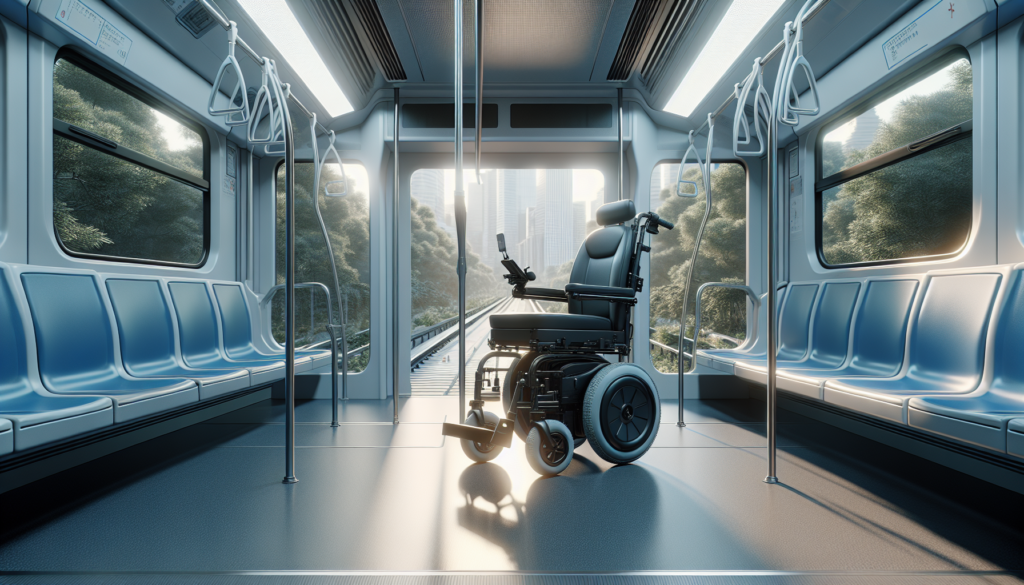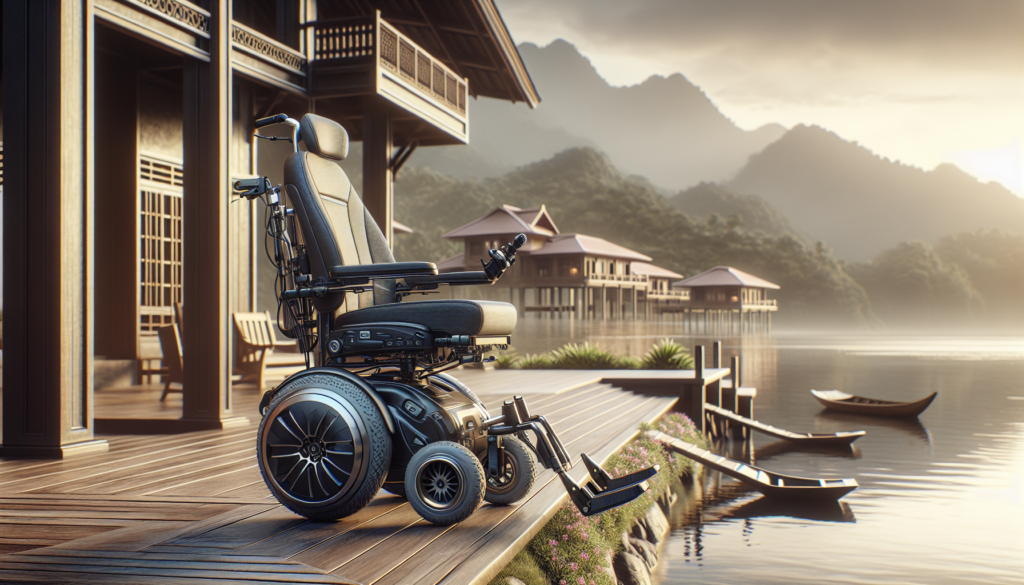
In the realm of mobility aids, choosing between an electric wheelchair and a traditional manual wheelchair can be a daunting task. Electric wheelchairs, with their advanced technology and enhanced capabilities, offer a level of convenience and independence that regular wheelchairs simply cannot match. With features such as varying speed modes, longer ranges per charge, and the ability to traverse different terrains effortlessly, electric wheelchairs stand out as a smart investment for those seeking greater mobility and comfort. This blog by EKO Life MY will explore the key differences between electric and regular wheelchairs, helping you make an informed decision on which option best suits your needs.
1. Overview of Electric Wheelchairs and Their Functionality
Electric wheelchairs offer users enhanced mobility and independence compared to traditional manual wheelchairs. Designed with advanced technology, these electric mobility aids come equipped with powerful batteries and dual motors, allowing users to navigate various terrains with ease. For instance, models like the Edegree EW6 provide a range per charge of 10-15 km and a maximum load capacity of 100 kg. With features such as multiple speed modes and the ability to climb inclines, electric wheelchairs cater to diverse mobility needs while significantly reducing physical strain on the user.
Moreover, electric wheelchairs foster greater freedom for individuals who may find manual wheelchairs challenging to operate due to physical limitations. With models like the Stonbike TU-04 boasting an impressive 25 km range and a climbing ability of 25°, users can confidently tackle outdoor environments without the constraints that come with a regular wheelchair. The ease of charging—with options ranging from 3 to 8 hours—ensures they are convenient for everyday use. Investing in an electric wheelchair means investing in a tool that empowers users, making daily tasks more manageable and allowing them to enjoy richer, more fulfilling lives.
2. Comparing Speed and Range: Efficiency of Electric Models
When considering the efficiency of electric wheelchairs, speed and range are crucial factors that set them apart from traditional models. Electric wheelchairs, like the Edegree EW1 and Edegree EW6, offer a notable range per charge, with Edegree EW1 supporting up to 20 kilometers and EW6 providing a range of 10-15 kilometers. This distance allows users to travel longer without the need for frequent recharging. Additionally, motor power, represented by the Edegree’s dual motor capabilities, enhances not only speed — with forward speeds ranging up to 8 km/h for the EW6 — but also a better response in various terrains. With these models, users can access various environments comfortably, making them more suitable for active lifestyles.
In contrast, regular wheelchairs often lack this mobility and range, requiring manual pushing or assistance for longer distances. While return time for electric wheelchairs typically varies, charging usually takes between 3 to 8 hours, depending on the model. For instance, the Stonbike TU-04 features a surprisingly quick charging time of 3-5 hours with a 25-kilometer range, making it efficient for daily activities. Therefore, electric wheelchairs not only provide enhanced speed and distance capabilities but also add convenience and independence to the lives of users, making them a smarter investment over traditional options.
3. Comfort and Mobility: The Advantages of Electric Wheelchairs
Electric wheelchairs offer superior comfort and mobility compared to traditional manual wheelchairs. With the ease of an electric motor, users can navigate various terrains without the physical strain associated with manual operation. For instance, models like the Edegree EW6 boast a dual motor configuration that allows speeds of up to 8 km/h and a climbing ability of less than 10 degrees, making it easier to tackle slight inclines and travel longer distances—up to 15 kilometers per charge. This kind of mobility not only enhances independence but also reduces the risk of fatigue and discomfort during use, which can be a significant factor for users with limited physical strength.
Moreover, electric wheelchairs often come equipped with features that enhance the overall user experience. For example, the Stonbike TU-04 can manage a remarkable climbing ability of 25 degrees, allowing users to navigate tougher terrain. With an efficient charging time of just 3-5 hours and the ability to support heavier weights, electric wheelchairs prove to be a valuable investment. The choice between various models, such as the Edegree EW1 and others, can cater to individual needs and preferences, ultimately leading to a more fulfilling and comfortable mobility experience for users.
4. Weight Considerations: Portability and Storage
When it comes to selecting the right mobility solution, weight plays a critical role in the overall convenience of an electric wheelchair. For instance, electric wheelchairs such as the Edegree EW6 weigh in at 14.8kg, making it significantly lighter than other options like the Stonbike TU-04 at 28kg. This lighter weight not only facilitates easier transportation but also enhances portability, allowing users to maneuver their wheelchair with greater ease. Furthermore, having a manageable weight is essential for safe storage, ensuring that users can store their electric wheelchair in compact spaces without difficulty.
The weight of an electric wheelchair even impacts its usability; lighter models can make it simpler to navigate through tight spaces or lift into a vehicle for travel. Unlike traditional wheelchairs, many electric models such as the Edegree EW1, despite being heavier at 38kg, come equipped with powerful motors and features that help compensate for this weight. Therefore, considering the balance of functionality, comfort, and weight can help users make a more informed decision, as the benefits of lighter, more compact electric wheelchairs can significantly enhance mobility and independence.
5. Battery Types and Charging Times: What You Need to Know

When choosing an electric wheelchair, understanding the battery type and charging times is crucial for ensuring a seamless mobility experience. Electric wheelchairs typically come with lithium or lead-acid batteries. For instance, the Edegree EW6, with its lithium battery, offers a range of 10-15 km on a full charge, while the Stonbike TU-04 can reach up to 25 km due to its efficient lithium battery technology, highlighting the advantages of lithium over lead-acid. The charging times vary significantly; the Edegree EW6 requires 6-8 hours, whereas the Stonbike TU-04 only takes 3-5 hours, making it a more convenient option for those who need quicker access to mobility solutions.
This efficiency in charging and range provided by lithium battery-powered electric wheelchairs demonstrates why investing in them can lead to greater independence and flexibility compared to regular wheelchairs. Moreover, while lead-acid batteries, like the one used in the Edegree EW1, can provide a solid performance with a 20 km range and a charging time of just 6 hours, they often weigh more and have a shorter lifespan, which can affect overall usability.
The trade-offs in battery technology and the corresponding weights also matter, as lighter electric wheelchairs like the Edegree EW6 (14.8 kg) provide easier handling and transport, making them an ideal choice for users. Therefore, factoring in battery types and charging efficiencies not only informs your choice but also represents a smart investment in your mobility.
6. Climbing Ability and Terrain Adaptability
When considering an electric wheelchair versus a regular wheelchair, climbing ability and terrain adaptability are crucial factors to evaluate. Electric wheelchairs are often equipped with powerful motors and enhanced design features that allow them to navigate a variety of terrains. For instance, models like the Edegree EW1 and Stonbike TU-04 demonstrate impressive climbing capabilities, with the EW1 able to conquer inclines of up to 13° and the Stonbike TU-04 surpassing this with a climbing ability of 25°. This means that users can confidently tackle ramps and uneven surfaces, promoting greater mobility and independence compared to traditional manual wheelchairs, which may struggle on steeper grades or rough terrain.
Additionally, electric wheelchairs are designed with versatility in mind, accommodating users who need to traverse both indoor and outdoor environments. The adjustable speed and advanced gear systems in models like the Edegree EW6, with its five-speed mode, enable users to control their pace according to the terrain they are navigating, enhancing safety and comfort. This adaptability is particularly advantageous in urban settings, where users may encounter curbs, slopes, and variable surfaces. With these benefits clearly outlined, it becomes evident that electric wheelchairs not only meet mobility needs but also encourage a more active and engaged lifestyle for their users.
7. Financial Implications: Cost vs. Long-Term Benefits
When considering the financial implications of electric wheelchairs versus regular wheelchairs, it’s essential to weigh the initial investment against long-term benefits. Electric wheelchairs, such as the Edegree EW1 and EW6, may come with a higher price tag, with costs starting around RM 2,499 and going up to RM 4,388. However, these models provide significant advantages in terms of mobility, speed, and terrain adaptability. For instance, the Edegree EW6 features a range per charge of 10-15 km allowing users more freedom to navigate their surroundings with ease. This could translate into less dependence on caregivers and reduce travel costs in the long run, making electric wheelchairs a compelling financial choice for many users.
Additionally, electric wheelchairs often incur lower ongoing costs compared to regular wheelchairs. While the upfront cost of an electric wheelchair may seem daunting, considering factors like potential medical expenses, physical therapy, or the need for assistance can shift the perspective. With faster speeds, superior climbing ability, and greater range, models like the Stonbike TU-04 emphasize efficiency, allowing users to explore broader areas without as much fatigue. Ultimately, choosing an electric wheelchair represents not just a cost but an investment in independence and quality of life, serving to mitigate long-term expenses associated with limited mobility.
8. User Experience: Real-Life Testimonials and Stories
When considering the shift from regular wheelchairs to electric wheelchairs, user experience plays an integral role in understanding why these modern mobility aids are a worthwhile investment. For example, individuals who have transitioned to the Edegree EW6 have reported a newfound sense of freedom and independence. With a range of 10-15 km per charge, this electric wheelchair allows users to explore their surroundings without the physical strain typically associated with manual models. Many have shared stories of how features such as the dual motor and 5-speed modes have improved their mobility over various terrains, enhancing their overall quality of life.
Additionally, users of other electric models like the Stonbike TU-04 have praised its comfortable design coupled with a remarkable climbing ability of up to 25 degrees. The ability to navigate hilly terrains without assistance not only boosts confidence but also encourages adventure. Testimonials reveal a common theme: electric wheelchairs are not just a mode of transportation; they are a gateway to greater social interaction and personal empowerment. As more users share their positive experiences, it’s clear that investing in an electric wheelchair can lead to a significantly improved lifestyle and enhanced mobility freedom for those with mobility challenges.
Making the Right Choice: Investing in an Electric Wheelchair

In conclusion, when weighing the benefits of electric wheelchairs against regular wheelchairs, it’s clear that electric options provide significant advantages in terms of mobility, comfort, and efficiency. The convenience of not having to rely on another person for propulsion can greatly enhance one’s quality of life. Models such as the Edegree EW6 and Stonbike TU-04 offer impressive ranges and features that cater to different user needs, making these smart investments for those looking to maintain independence and mobility.
The technology behind electric wheelchairs continues to evolve, ensuring improved performance and accessibility, further justifying the investment. Moreover, the long-term value that comes from enhanced mobility capabilities, combined with features tailored for comfort and versatility, adds to the appeal of electric wheelchairs. While the initial cost might be a consideration, factors such as reduced physical strain and greater freedom of movement make the investment worthwhile. As we continue to navigate advancements in mobility technology, it is undoubtedly wiser to embrace the electric wheelchair revolution for a more empowered and independent lifestyle.

Basic writing, could use more examples or data to make it interesting.
Thank you for taking the time to share your honest feedback, May. We appreciate your suggestion to include more examples and data to make the content more engaging. At Eko Life Malaysia, we constantly strive to improve our content and better serve our readers. If you have any specific ideas or suggestions on how we can enhance our blog posts, please feel free to share and we will consider them. You can also reach out to us directly at [email protected] or +60 3-7890 3042 to discuss further.
Seems like a lot of text, would be great if you could break it down into smaller sections.
Hi Lakshmi Wong, we appreciate your feedback and will consider breaking down lengthy text into smaller sections to enhance readability. We value your input and would like to thank you for visiting our blog at Eko Life Malaysia. If you have any other suggestions, feel free to share them. If you need further assistance, please don’t hesitate to contact us at [email protected] or +60 3-7890 3042.
I don’t see a summary, could you please provide one?
Thank you for reaching out, Nina. We apologize for the confusion. Unfortunately, it seems that our blog summary has not been updated yet. However, we assure you that our products and services are of the highest quality, and our team is always here to help. If you could provide us with more context or specify what you’re looking for, we’d be more than happy to assist you. Please don’t hesitate to contact us at [email protected] or +60 3-7890 3042.